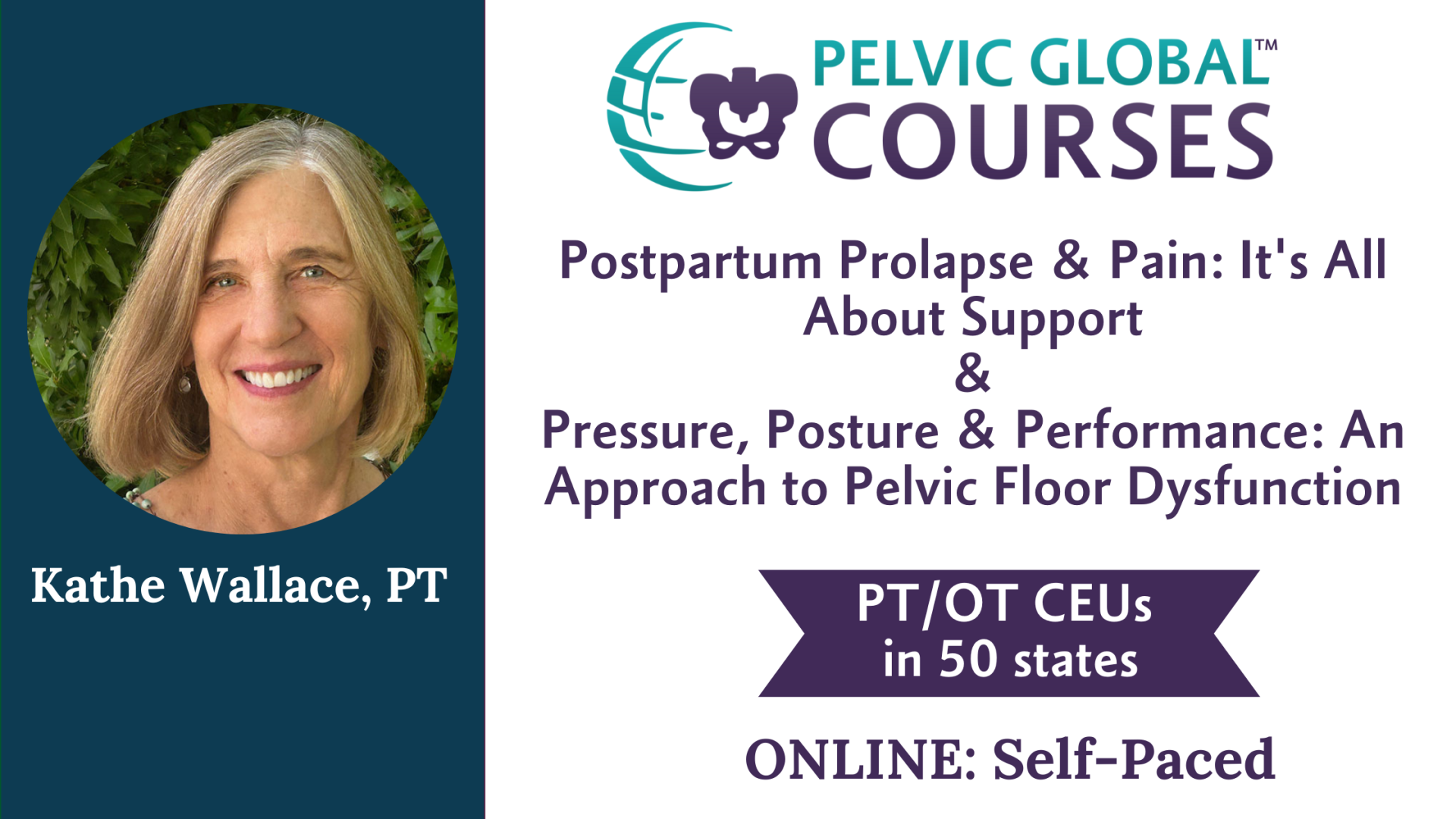SELF PACED Postpartum Prolapse & Pain: It's All About Support

What to expect:
The curriculum instructs examination of advanced fascial anatomy of the pelvic floor support system and internal vaginal and rectal evaluation techniques for anterior, posterior, and apical support changes. This includes assessments for perineocele, enterocele, and levator ani (LA) injury.
You will experience a comprehensive learning journey with lectures that delve into the intricacies of advanced palpation. Watch video examinations conducted with and without a ½ speculum, a technique that offers a profound understanding of the changes in vaginal support across various types of prolapse.The goal is to facilitate the identification of structures that may be the source of symptoms. What sets this learning experience apart from a live course is the opportunity to see different types of prolapse, enhancing your understanding.
Curriculum Highlights:
Advanced fascial anatomy of the pelvic floor support system
Internal vaginal and rectal evaluation techniques including levator ani injury and the use of a ½ speculum for POP assessment
Detailed explanations of Pelvic Organ Prolapse Quantification (POP-Q) and the importance of external perineal landmarks
Evidence-based information on selecting appropriate candidates for pessary use.
Functional pelvic exams, breathing (intro to Hypopressive technique), abdominal wall, and posture evaluations.
Current evidence on the use of pelvic floor muscle training, lifestyle advice and pessaries for POP
Patient education and functional treatment progressions delivered with case discussions
See what people have to say about this course
What will you learn?
At the completion of this course, participants will be able to:
Name three vaginal pelvic fascia and/or levator hiatus support structures which could contribute to symptoms of pelvic pain.
Name two fascial structures in each of the three levels of Delancey’s fascial support.
List three modifiable conditions that could affect results of vaginal fascial examination.
Name the internal vaginal locations and depth of palpation for examination for common levator ani injury/avulsion sites, the ATLA, ATFP, ATRV pelvic fascia, uterosacral ligament, cervix and its posterior fornix.
Outline the four steps of a digital levator ani injury/avulsion examination.
Name and explain the seven vaginal and two external points of the POP-Q examination.
Explain prolapse fascial exam with a ½ speculum and external POP-Q measurements (gh, pb) including the appropriate instructions and supplies.
Identify two principles of the Hypopressive technique.
Explain three types of abdominal wall evaluations for patients with PFD.
Summarize four breathing techniques for patients with PFD.
Apply postural and IAP management strategies for functional activities with PFD.
Course Content:
Proposed PF Muscle Diagnoses
Anatomy Peritoneum and Pelvic Fascia
Anatomy Levator Ani and Perineal Body
Pelvic Support & Prolapse Advanced Exams - External Techniques
Pelvic Support & Prolapse Advanced Exams - Internal Techniques
Levator Ani Injury Exam Techniques
POP-Q and Staging Prolapse
Advanced Prolapse Assessment Techniques
Functional Postural Exams
Treatment PFMT & Lifestyle Advice
Pessaries for POP
Breathing, Vocalization and Intro to Hypopressives
Breath Hold Maneuvers Explained with Tamara Rial
Abdominal Wall and Breathing
Functional Activity, IAP and Exercise
POP Myofascial Treatments
Functional Exams of the PF
Kathe Wallace, PT



